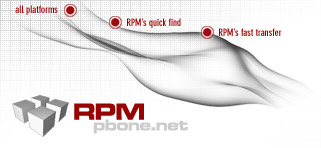| Name : perl-AI-Genetic
| |
| Version : 0.05
| Vendor : obs://build_opensuse_org/devel:languages:perl
|
| Release : lp154.8.1
| Date : 2023-01-27 16:06:59
|
| Group : Development/Libraries/Perl
| Source RPM : perl-AI-Genetic-0.05-lp154.8.1.src.rpm
|
| Size : 0.08 MB
| |
| Packager : https://www_suse_com/
| |
| Summary : Pure Perl Genetic Algorithm Implementation
|
Description :
This module implements a Genetic Algorithm (GA) in pure Perl. Other Perl
modules that achieve the same thing (perhaps better, perhaps worse) do
exist. Please check CPAN. I mainly wrote this module to satisfy my own
needs, and to learn something about GAs along the way.
*PLEASE NOTE:* As of v0.02, AI::Genetic has been re-written from scratch to
be more modular and expandable. To achieve this, I had to modify the API,
so it is not backward-compatible with v0.01. As a result, I do not plan on
supporting v0.01.
I will not go into the details of GAs here, but here are the bare basics.
Plenty of information can be found on the web.
In a GA, a population of individuals compete for survival. Each individual
is designated by a set of genes that define its behaviour. Individuals that
perform better (as defined by the fitness function) have a higher chance of
mating with other individuals. When two individuals mate, they swap some of
their genes, resulting in an individual that has properties from both of
its \"parents\". Every now and then, a mutation occurs where some gene
randomly changes value, resulting in a different individual. If all is well
defined, after a few generations, the population should converge on a
\"good-enough\" solution to the problem being tackled.
A GA implementation runs for a discrete number of time steps called
_generations_. What happens during each generation can vary greatly
depending on the strategy being used (See \"STRATEGIES\" for more info).
Typically, a variation of the following happens at each generation:
* *1. Selection*
Here the performance of all the individuals is evaluated based on the
fitness function, and each is given a specific fitness value. The higher
the value, the bigger the chance of an individual passing its genes on in
future generations through mating (crossover).
* *2. Crossover*
Here, individuals selected are randomly paired up for crossover (aka
_sexual reproduction_). This is further controlled by the crossover rate
specified and may result in a new offspring individual that contains genes
common to both parents. New individuals are injected into the current
population.
* *3. Mutation*
In this step, each individual is given the chance to mutate based on the
mutation probability specified. If an individual is to mutate, each of its
genes is given the chance to randomly switch its value to some other state.
|
RPM found in directory: /packages/linux-pbone/ftp5.gwdg.de/pub/opensuse/repositories/devel:/languages:/perl:/CPAN-A/15.4/noarch |
